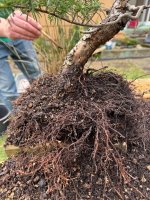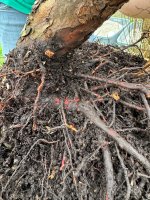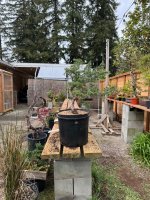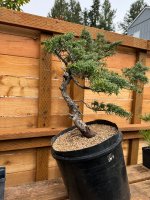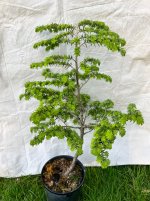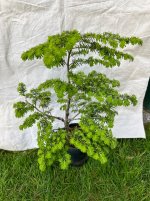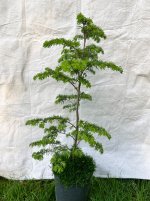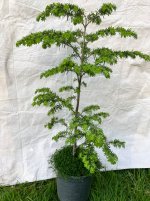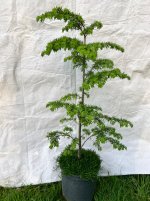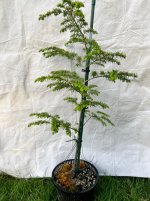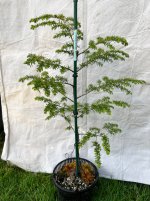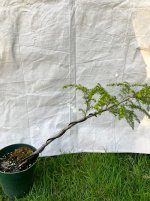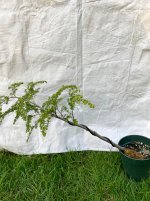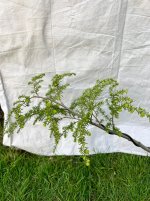River's Edge
Imperial Masterpiece
Hemlock take multiple wiring sessions over several years to train and set in place. Typically the wire is replaced after removal for best results and fewer set backs.I plan to repot one of my hemlocks (the one mentioned above in this very thread). Despite my earlier damage to it, it is growing quite strongly, with a significantly greater number of buds than my other two hemlocks.
Here’s a picture from about a month ago.
View attachment 568301
I will repot this tree this spring. Considering this planned scope of work, should I consider wiring in the fall? These are some possible approaches I’m considering:
* detail wire only
* structural wire only
* guy wire two lower “trunks” only
* full wire
In all cases, I will use copper this time, as well as my vastly improved wiring experience and lean on my mentors, both of whom have advanced training in hemlocks.
Your first phrase in the above post is the most important! The next step depends on the expected amount of root work for this particular tree. If the tree has had considerable root work already accomplished and the root ball is established for life in a Bonsai pot then full wiring is in order. If not, the safest route is to complete the proper root work over the next two growing seasons and then begin heavy wiring that can be accomplished continuously during the design and refinement process for four or five years after that.
Can it be done differently, of course, however consider the advantage of creating refined growth while working with a refined root ball. Often the approach is to work the tree heavily first, then begin the root work. This often backfires, setting the tree back and lengthening the process. Particularly if the footwork is incorrectly staged. Hemlock rely on fine feeder roots near the surface and often this area needs to be removed and replaced over time to expose the best base and nebari for the design.
Many years ago I began a collected tree with Michael Hagedorn. The process was to rough style and wire the tree while still in the nursery pot and with primarily the collected soil and collected root ball intact. Allow the tree to recover and begin repotting the following year or two years later depending on the recovery.! The catch was that the repotting and subsequent root work was staged over several years while the tree was continuously wired and developed. If this is what is intended then I agree with the approach.
The key is your particular situation, how much root work is required, how much change in the planting angle, what is the existing amount of feeder roots. You have the advantage of mentors with training so they can help sort out the best practise in this particular situation. I prefer Michaels approach to styling in coordination with staged repotting and development of root ball and planting angle. For most trees with considerable potential I prefer to have the root ball established the nebari exposed and planting angle determined before wiring for design. The reason being is that Hemlock branches and pads take considerable extended wiring to set in place. Re working the design is not a quick process. So initially I would focus on initial design through branch selection and structural wiring or heavy bending if required in this particular case. The tree appears to be very much in the beginning of its journey.
Hope the comments make sense and are of assistance.


